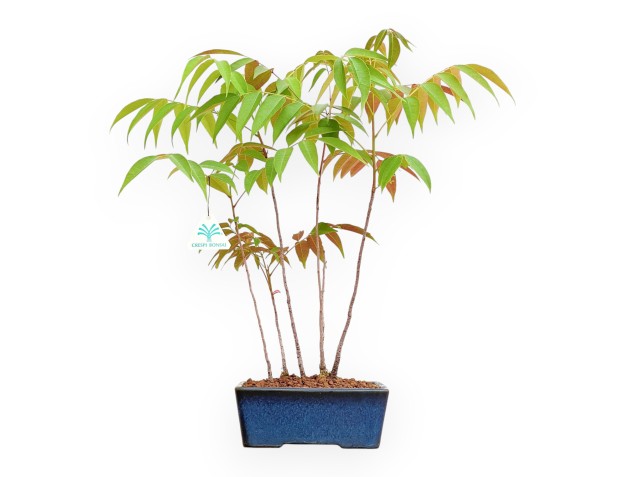Rhus succedanea is an outdoor species and prefers bright, well-ventilated locations. It should be placed outdoors year-round, so it can benefit from direct sunlight, which is essential for healthy, compact growth. However, in the hottest summer months, it's best to provide light shade during the midday hours to prevent leaf scorch. In winter, it tolerates fairly low temperatures, but if frosts become severe or prolonged, it's advisable to move it to a cold greenhouse or a sheltered location, protecting the root ball with non-woven fabric.
The common watering rule, which dictates watering whenever the soil feels dry to the touch, is also ideal for Rhus succedanea, although more frequent watering is necessary during hotter periods and in strong winds. It's also important to keep in mind that both a lack of water and an excess can cause serious problems for the plant. Specifically, a lack of water causes drooping leaves and stunted growth; excess water causes the leaves to blacken at the apical tips.
Repotting should be done every two or three years, preferably in spring, before the plant begins to grow again. The new substrate must be well-draining and airy: an ideal mix is equal parts akadama and pumice, possibly with a small percentage of prepared soil to increase water retention.
Pruning the Rhus succedanea bonsai plays a fundamental role in shaping and maintaining the tree's structure. Formative pruning is generally performed in late winter or early spring, before the vegetative growth begins, and serves to establish the bonsai's overall shape by eliminating poorly positioned, crossed, or overly vigorous branches. Maintenance pruning, on the other hand, is performed during the growing season to contain growth and maintain balance between the various parts of the crown. It is important to make clean and precise cuts, protecting larger wounds with healing putty to prevent infection and promote proper healing.
Pinching is one of the main techniques for keeping Rhus succedanea compact and harmonious. It is done by shortening the new shoots when they have produced five to six leaves, leaving two or three to encourage denser branching. This practice allows for balanced growth and maintains the desired shape, as well as improving the proportion between branches and foliage. It is important to use sharp, clean scissors to avoid unsightly wounds or infections.
Wrapping with copper or aluminum wire helps shape the bonsai's structure and direct the growth of the branches according to the desired pattern. For Rhus succedanea, it's best to do this during the growing season, when the branches are most flexible. The wire should be applied carefully, without overtightening, and removed as soon as the branches begin to grow to avoid permanent marks on the bark. This technique, if properly managed, enhances the plant's natural and dynamic character.
Fertilization is essential to keep Rhus succedanea healthy and vigorous. Regular fertilization is recommended from spring until late fall, with a pause during winter and the warmest months of the year. It's best to use a slow-release organic fertilizer balanced with nitrogen, phosphorus, and potassium, or alternate with specific liquid fertilizers for bonsai, following the recommended dosages. During the spring growth phase, nitrogen can be slightly increased to encourage leaf development, while in fall, it's best to emphasize phosphorus and potassium to strengthen roots and branches.
Among general care, it's important to regularly monitor the bonsai's health, checking for as aphids, scale insects, or red spider mites, which can appear especially during hot, dry periods. With constant attention and a balance of light, water, and nutrients, the Rhus succedanea bonsai will reward the enthusiast with elegant shapes and autumn foliage of rare beauty.



